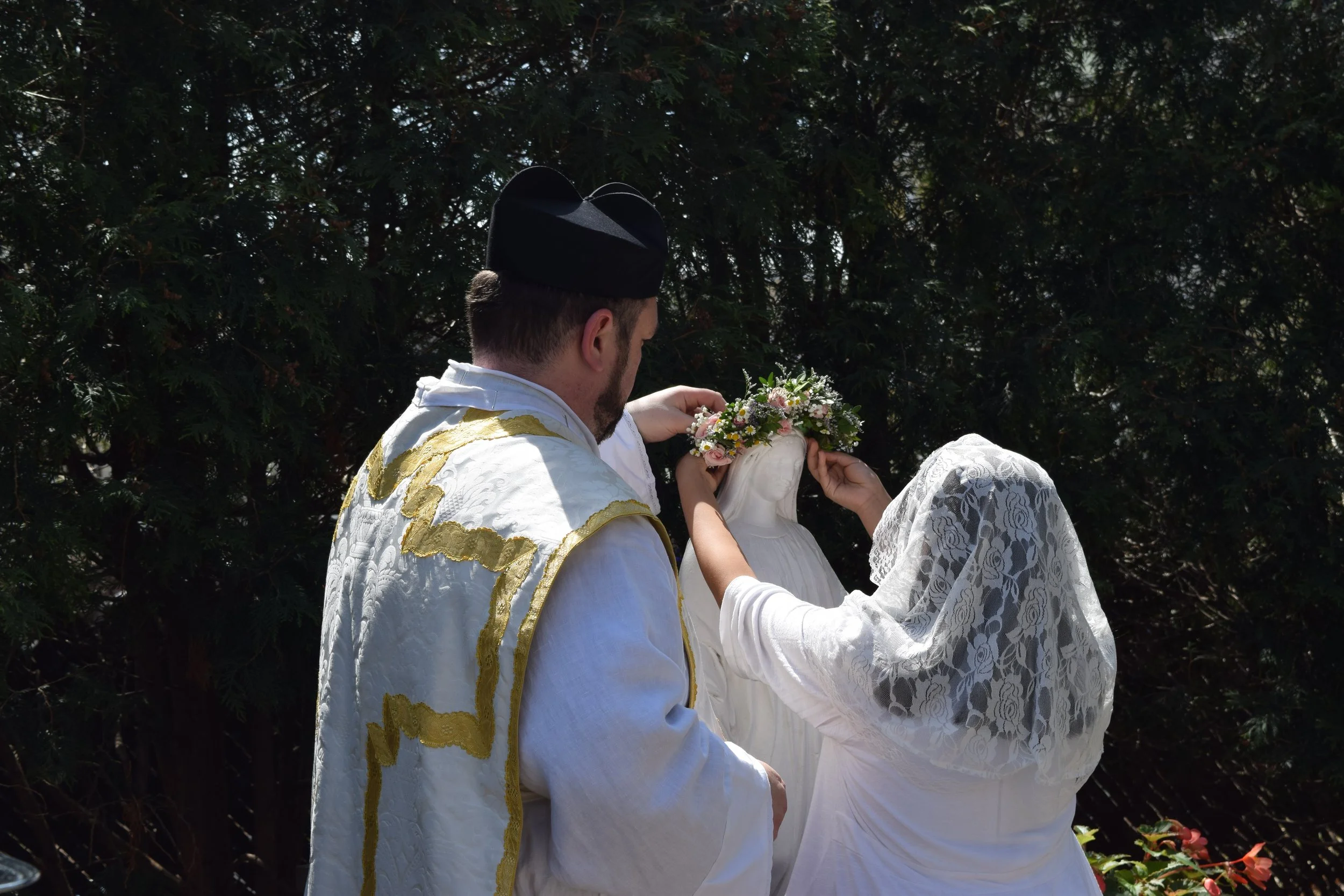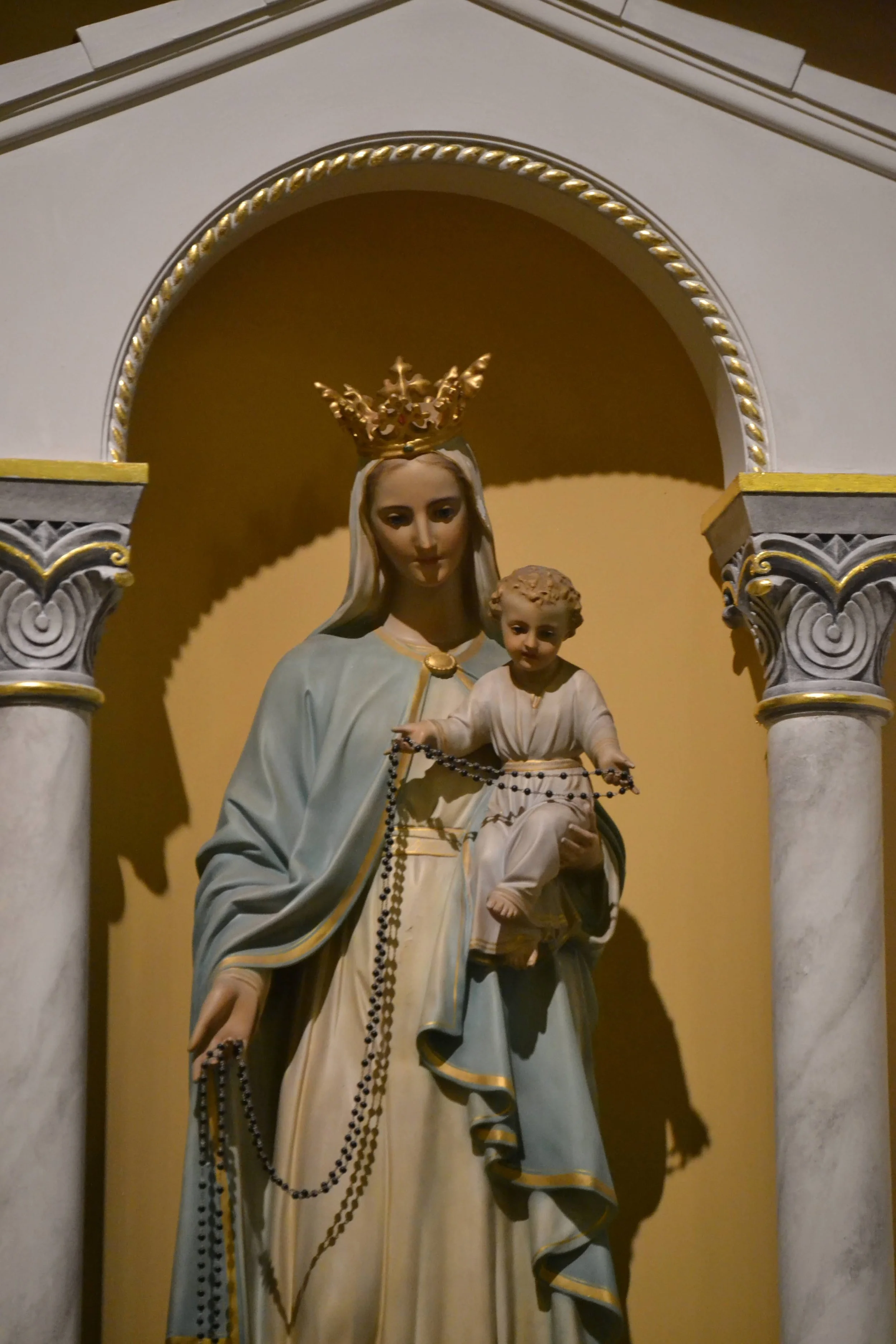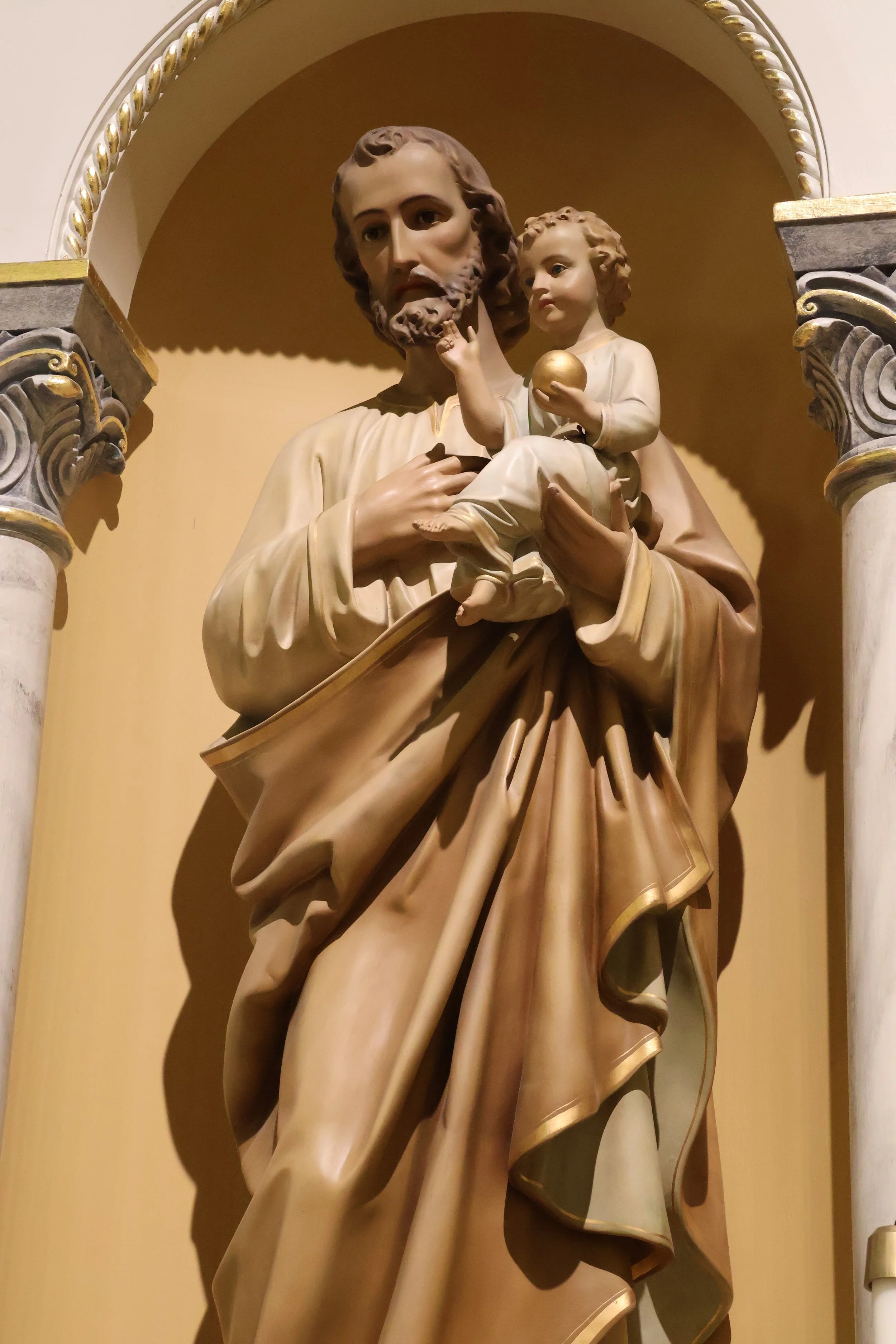Catholic Devotionals
Devotionals help us deepen our faith and relationship with God. Below are some examples of devotionals that we hope you find helpful. You can also contact the parish at 612-379-4996 or email us at allsaints@fsspminneapolis.org for any additional questions you may have.
First Fridays and Saturdays
-
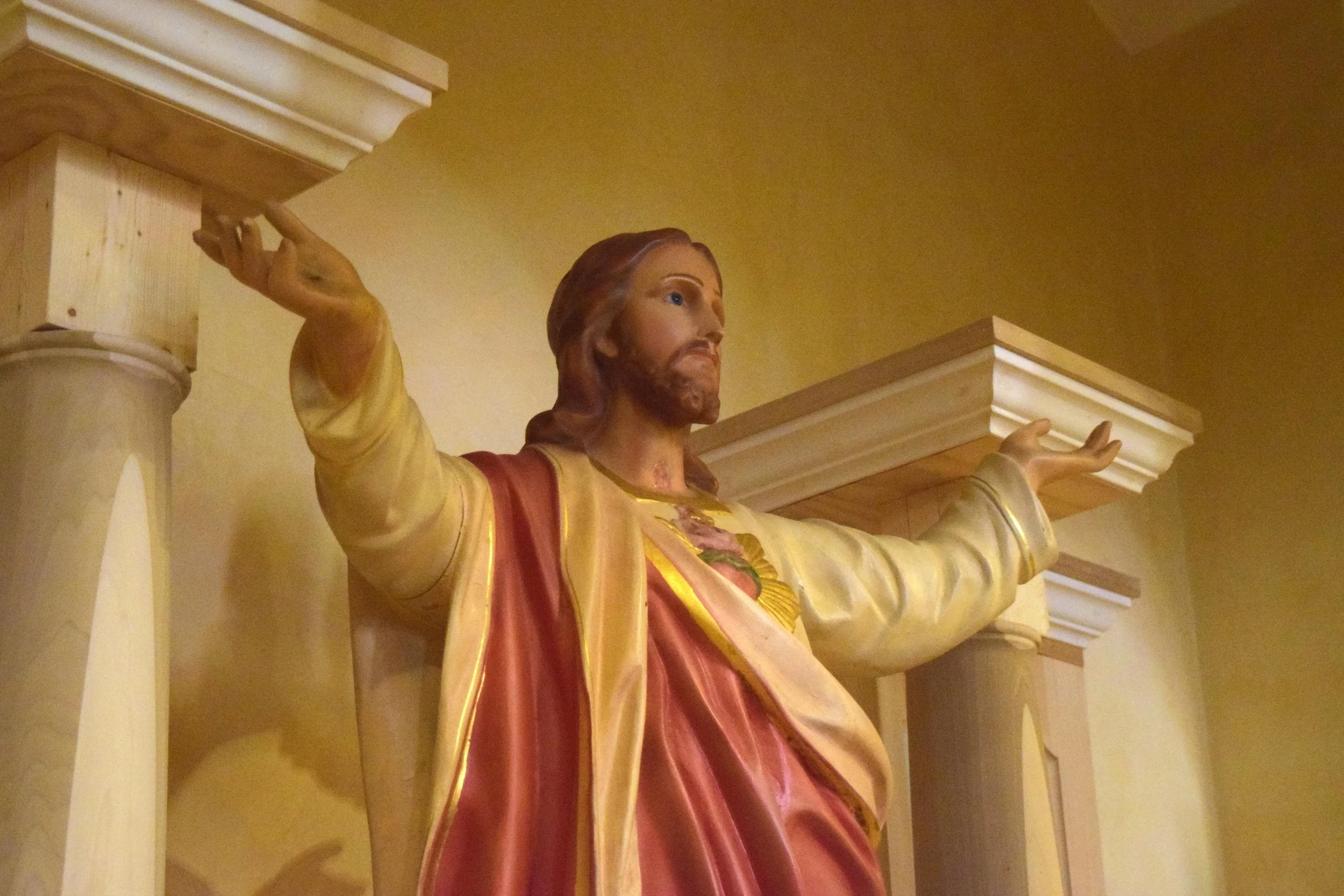
First Fridays
Our Lord to St. Margaret Mary Alacoque: “Behold this heart which, not withstanding the burning love for men with which it is consumed and exhausted, meets with no other return from most Christians than sacrilege, contempt, indifference and ingratitude, even in the sacrament of my love [the Eucharist]. But what pierces my heart most deeply is that I am subjected to these insults by persons especially consecrated to my service. … I promise you in the unfathomable mercy of my heart that my omnipotent love will procure the grace of final penitence for all those who receive communion on nine successive first Fridays of the month; they will not die in my disfavor [the grace of final repentance], or without having received the sacraments, since my divine heart will be their sure refuge in the last moments of their life.”
The First Friday Devotion in the Catholic Church is a spiritual practice centered on devotion to the Sacred Heart of Jesus, originating from the private revelations of St. Margaret Mary Alacoque in the late 17th century in Paray-le-Monial, France. Jesus appeared to her, expressing his desire for Catholics to honor his Sacred Heart, symbolizing his boundless love and mercy. To practice this devotion, Catholics must receive Holy Communion on the first Friday of each month for nine consecutive months, attend Mass, make a good confession to be in a state of grace, and offer their Communion in reparation for sins committed against the Sacred Heart. The devotion aims to foster a deeper relationship with Christ, encourage repentance, and make reparation for sins. According to the revelations, Jesus promised twelve graces to those who faithfully practice this devotion, including: 1) the grace of final repentance, ensuring they will not die without receiving the sacraments; 2) all graces necessary for their state of life; 3) abundant blessings on their undertakings; 4) peace in their homes; 5) comfort in their afflictions; 6) a secure refuge during life and especially at death; 7) the conversion of sinners; 8) fervor in the faith for the lukewarm; 9) perfection in their works for the zealous; 10) blessings for those who promote the devotion; 11) the inscription of their names in the Heart of Jesus; and 12) great mercy for souls in purgatory through their prayers. This practice remains popular among Catholics seeking to grow in holiness and trust in divine mercy.
-

First Saturdays
Our Lady to Lucia at Fatima: “Look, My daughter, at My Heart, surrounded with thorns with which ungrateful men pierce Me at every moment by their blasphemies and ingratitude. Do you, at least, try to console Me and announce in My name that I promise to assist at the moment of death, with all the graces necessary for salvation, all those who, on the first Saturday of five consecutive months shall confess, receive Holy Communion, recite five decades of the Rosary, and keep Me company for fifteen minutes while meditating on the fifteen mysteries of the Rosary, with the intention of making reparation to Me.”
The First Saturday Devotion, also known as the Five First Saturdays, is a Catholic practice rooted in the apparitions of the Blessed Virgin Mary to the children of Fatima, Portugal, in 1917. Mary requested this devotion to make reparation for sins against her Immaculate Heart. To fulfill the devotion, Catholics must, on the first Saturday of five consecutive months: 1) go to Confession (within eight days before or after), 2) receive Holy Communion, 3) pray five decades of the Rosary, and 4) meditate for 15 minutes on the mysteries of the Rosary, all with the intention of making reparation to the Immaculate Heart of Mary. The devotion aims to console Mary’s heart, atone for blasphemies and ingratitude, and obtain graces for sinners. Mary promised to those who faithfully complete this devotion the graces necessary for salvation at the hour of death, ensuring her assistance and the opportunity for final repentance. This practice remains a cherished devotion among Catholics seeking to honor Mary and grow in holiness.
Consecrations
-
Consecration to Our Lady
To consecrate is to set aside for a holy purpose. Total Consecration is the complete giving of oneself to Jesus through Mary in imitation of Our Lord. It is an act that is entirely dependent on the free will of the individual. It is a choice that one makes at a point in one’s life based on one’s experience of God’s love. In fact, to consecrate is an appreciation of God’s love; a reciprocation of His love as far as humanly possible. It was His love that prompted Him to create man in His own image, out of nothing and of His own freewill, the same love which made Him to die to redeem man, this same love has made Him a prisoner in all the tabernacles of the world and in our hearts, where He awaits to nourish and transform us through His real presence in the Holy Eucharist.
Total Consecration was formalized by St. Louis Maria De Montfort in the early 1700s. After his experience of God’s love, he sought the best way to thank God and found that imitating the entire life of Our Lord was the best means. In essence, becoming another Jesus; from His conception, his hidden life, through His death, resurrection, and ascension. In fact, he saw that Our Lord came to teach us to live like Him as a perfect means to give glory to the Eternal Father. Thus, He said, “Learn of me, because I am meek, and humble of heart: and you shall find rest to your souls…” (Matthew 11: 29). Rest for our souls is God’s chief priority.
In the entire life of Our Lord, Our Lady was at the center. For it was she who conceived Him, bore Him, nourished Him, reared Him and sacrificed Him for our salvation. Thus, De Montfort called this consecration a “True Devotion to Mary.” Our Lord was so devoted to His Mother, Mary, that they formed a bond. De Montfort referring to this bond said it would be easier to separate heat from fire than to separate Jesus from Mary.
This consecration takes place on a specific day, but the preparatory exercise is for 33 days. De Montfort made it 33 days to show the years Our Lord spent on earth with Mary and to emphasize that we are to grow into the “fullness of the perfect age of Our Lord.”
There are three categories of souls who make this consecration: First, those who understand the importance of true devotion to Mary and see De Montfort’s preparatory exercise as a means to purify and attain the proper disposition necessary for consecrating to Jesus through Mary. The second are those who learn true devotion to Mary by joining the preparatory exercise and through the grace of God and their necessary sacrifices, they are able to attain that disposition. The others attain that disposition after participation in two or more preparatory exercises and then decide to freely give themselves in consecration to Mary.
The disposition necessary for this consecration is that of humility. It is a state in which one sees everything as a special gift from God and oneself as deserving nothing. De Montfort calls it a state of Holy Slavery. The image that portrays this devotion is that of Jesus in the womb of Mary. After the annunciation, He became utterly dependent on her for everything. Another image used by De Montfort is that of Mary as the mold of God. He said that in order to mold man into God, he has to allow himself to be molten and poured into Mary (the mold).
To attain this disposition, one needs prayer and spiritual exercises. To help facilitate the understanding of the devotion and the acquiring of the necessary disposition, it is recommended to read and study these two books written by De Montfort: first, “Secret of Mary” and second, “True Devotion to Mary.”
Compiled by Legion of Mary, Regina Caeli Parish — Houston, TX
-
Consecration to St. Joseph
The Consecration to St. Joseph is a spiritual act of dedicating oneself entirely to Jesus through the guidance and protection of St. Joseph, the foster father of Christ, inspired by the writings of figures like Fr. Donald Calloway in his book Consecration to St. Joseph: The Wonders of Our Spiritual Father. Rooted in St. Joseph’s unique role as the chaste guardian of the Virgin Mary and the earthly father of Jesus, this consecration invites the faithful to entrust themselves to his paternal care, imitating his virtues of humility, obedience, and silent strength. The devotion reflects a response to God’s love, manifested in Joseph’s unwavering fidelity to God’s plan, protecting the Holy Family and providing for their needs. By consecrating oneself to St. Joseph, one seeks to emulate his total surrender to God’s will, becoming a faithful disciple of Christ under Joseph’s fatherly guidance, much as Jesus was obedient to him in Nazareth.
The consecration typically involves a 33-day preparation, mirroring the structure of St. Louis de Montfort’s consecration to Mary, to foster a disposition of humility and trust in St. Joseph’s intercession. Catholics preparing for this act fall into three groups: those who already recognize St. Joseph’s role as a spiritual father and use the preparation to deepen their devotion; those who grow in understanding of his virtues during the 33 days and, through prayer and sacrifice, attain the necessary disposition; and those who, after repeated preparation, freely choose to consecrate themselves to him. The preparation includes daily prayers, reflections, and studying resources like Fr. Calloway’s book, culminating in a formal act of consecration on a chosen feast day, such as the Feast of St. Joseph (March 19). This lifelong commitment aims to mold the faithful into Christ’s likeness through Joseph’s example, promising spiritual protection, guidance, and a deeper union with the Holy Family.
Consecration Example: Dearest St. Joseph, I consecrate myself to your honor and give myself to you, that you may always be my father, my protector, and my guide in the way of salvation. Obtain for me a greater purity of heart and fervent love of the interior life. After your example, may I do all my actions for the greater glory of God, in union with the Divine Heart of Jesus and the Immaculate Heart of Mary. O Blessed St. Joseph, pray for me, that I may share in the peace and joy of your holy death. Amen. Calloway, Donald H., MIC. Consecration to St. Joseph: The Wonders of Our Spiritual Father. Marian Press, 2020, p. 317.
Other Devotionals
-
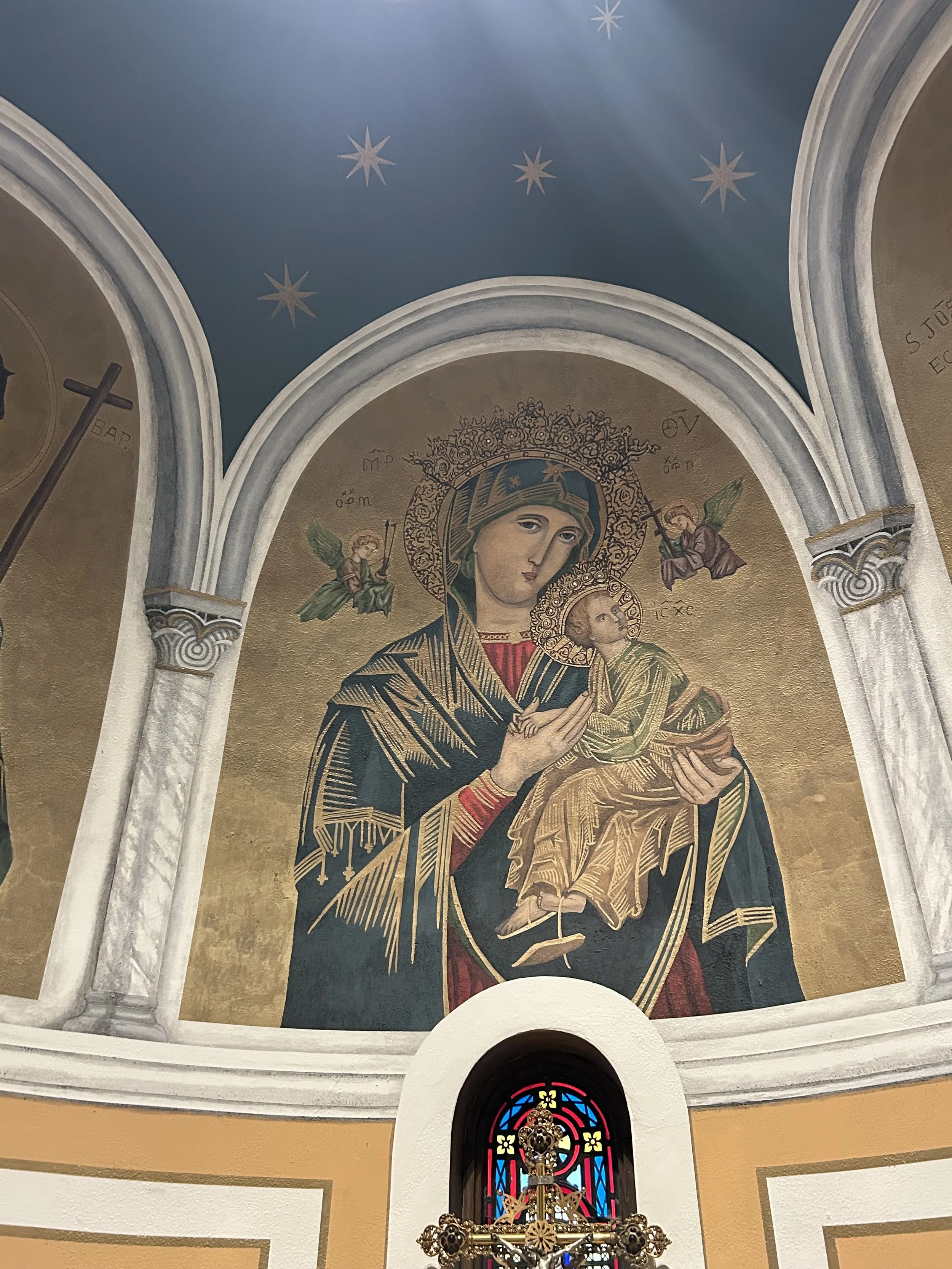
Our Mother of Perpetual Help
The devotion to Our Lady of Perpetual Help centers on a 15th-century Byzantine icon, traditionally attributed to the Cretan school, possibly painted by Andreas Rizo de Candia, depicting the Virgin Mary holding the Child Jesus while the Archangels Michael and Gabriel present the instruments of His Passion. The icon’s history traces back to its arrival in Rome around 1499, when a merchant, having acquired it from Crete, ordered it displayed for public veneration. Following a Marian apparition to a young girl, the icon was enshrined in the Church of St. Matthew on Via Merulana, between the basilicas of St. Mary Major and St. John Lateran, where it became known as the “Madonna di San Matteo.” For nearly three centuries, it drew pilgrims and was associated with numerous miracles, earning the title “The Very Miraculous Image.” After the church’s destruction by Napoleonic forces in 1812, the icon was hidden until its rediscovery in 1863. Pope Pius IX, who had prayed before it as a child, entrusted it to the Redemptorists in 1866, who enshrined it in the Church of St. Alphonsus Liguori in Rome, where it remains a focal point of devotion, with a feast day celebrated on June 27.
The devotion to Our Lady of Perpetual Help has since spread globally, with the Redemptorists as its primary promoters, fostering novenas and prayers that emphasize Mary’s role as a perpetual intercessor. The icon’s symbolism—Mary’s tender gaze, Jesus’ loosened sandal, and the instruments of the Passion—reflects themes of redemption and maternal protection, inspiring countless graces and healings. In 1876, Pope Pius IX elevated the Confraternity of Our Lady of Perpetual Succour and St. Alphonsus, established in Rome, to an archconfraternity, granting it privileges and indulgences. The Church of All Saints, is home to a cofraternity dedicated to Our Lady of Perpetual Help, continuing this tradition of devotion through communal prayer and veneration, uniting members in seeking Mary’s intercession for spiritual and temporal needs. This cofraternity, like others worldwide, fosters a deep connection to the icon’s promise of Mary’s unceasing aid, encouraging the faithful to live in imitation of her fiat.
-
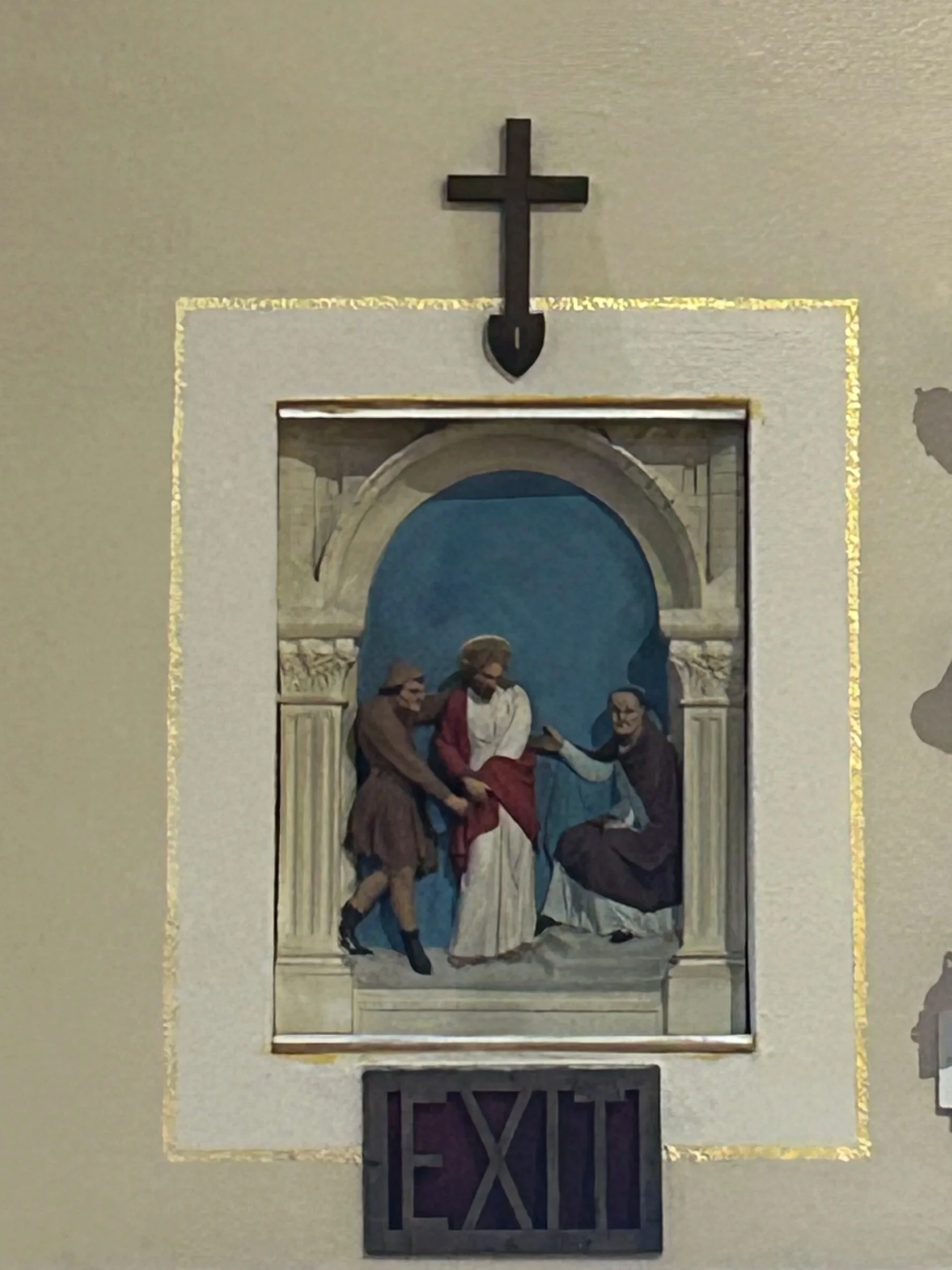
Stations of the Cross
The Stations of the Cross, also known as the Way of the Cross or Via Crucis, is a cherished Catholic devotion that invites the faithful to meditate on the Passion of Jesus Christ through a series of 14 stations, each representing a specific moment from His condemnation to His burial. Originating in the early Christian practice of pilgrims retracing Christ’s steps along the Via Dolorosa in Jerusalem, the devotion was formalized in the Middle Ages, largely through the efforts of the Franciscans, who were entrusted with the care of the Holy Land’s sacred sites in the 14th century. By the 17th century, the practice of erecting stations in churches spread across Europe, allowing Catholics worldwide to spiritually walk with Jesus, contemplating His suffering, sacrifice, and love for humanity. The devotion, often practiced during Lent, especially on Fridays, encourages repentance, gratitude, and a deeper union with Christ’s redemptive work.
Each station, typically depicted with images or crosses in churches, includes prayers, meditations, and sometimes scriptural readings, guiding the faithful through moments like Jesus carrying the Cross, His falls, and His crucifixion. The devotion fosters a profound sense of solidarity with Christ’s suffering and invites participants to reflect on their own crosses in life, uniting them to His sacrifice. St. Alphonsus Liguori’s meditations, composed in the 18th century, remain a popular guide, emphasizing contrition and love for God. The Stations of the Cross carry indulgences, as approved by the Church, and can be prayed individually or communally, often with a priest or leader. This devotion continues to be a powerful spiritual exercise, drawing Catholics into the heart of the Paschal Mystery, inspiring conversion and trust in God’s mercy.
The Church of All Saints offers a guided meditation on the Stations of the Cross every Friday during Lent starting at 6:25 PM.
